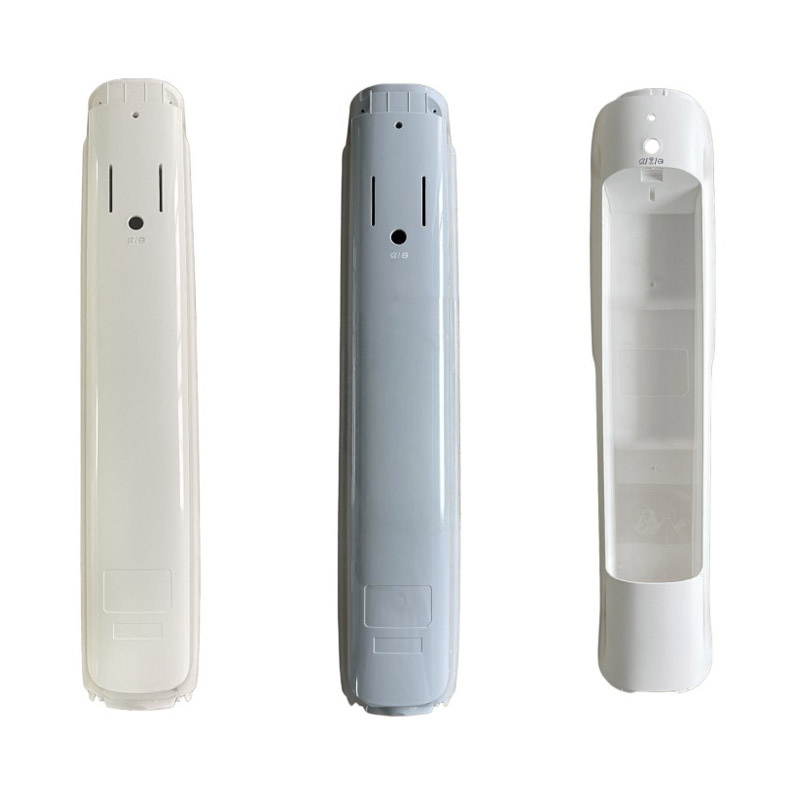What Makes Vacuum Cleaner Housing the Key to Durability, Performance, and Future Innovation?
2025-11-05
The Vacuum Cleaner Housing—often referred to as the vacuum body or outer shell—serves as the foundation of every cleaning system. It is far more than a simple protective shell; it represents the core of mechanical design, ergonomic comfort, noise reduction, and long-term reliability. In modern home and industrial cleaning solutions, the housing is a vital structural component that influences suction efficiency, air circulation, and even the energy consumption rate of the motor system.
As the global demand for advanced cleaning equipment increases, the quality of the housing has become one of the most discussed aspects in the manufacturing process. Today’s consumers not only expect strong suction and mobility from their vacuum cleaners but also durability, noise control, lightweight construction, and sustainability—all of which depend heavily on the engineering and materials behind the Vacuum Cleaner Housing.
The main purpose of vacuum cleaner housing is to:
-
Protect internal components such as the motor, filters, and dust containers from external impact.
-
Ensure air-tightness to maintain consistent suction pressure.
-
Reduce noise and vibration caused by high-speed airflow and motor rotation.
-
Provide an ergonomic design that enhances user comfort and usability.
-
Contribute to the overall aesthetic and brand identity of the product.
Below is a detailed technical specification overview to illustrate the complexity and engineering depth behind a high-quality Vacuum Cleaner Housing:
| Parameter | Specification Detail |
|---|---|
| Material Type | High-impact ABS / Polycarbonate / Reinforced PP |
| Surface Finish | Glossy, matte, or metallic coating for scratch resistance |
| Noise Reduction Layer | Multi-layer acoustic insulation integrated within housing walls |
| Thermal Resistance | Up to 120°C heat tolerance for motor safety |
| Weight Range | 0.8–1.5 kg depending on model |
| Color Customization | Available in 20+ color options for OEM/ODM requirements |
| Assembly Compatibility | Modular fitting design suitable for various motor and filter types |
| Durability Test Standard | Exceeds 30,000 operation cycles under mechanical stress tests |
These parameters emphasize that a vacuum cleaner’s external structure is not merely about aesthetics—it is a technical achievement that combines design precision, material innovation, and user-centered functionality.
Why Is Vacuum Cleaner Housing Critical to Performance and Longevity?
The Vacuum Cleaner Housing directly affects both the operational performance and lifespan of the entire appliance. When the housing is engineered with precision, every internal component—from motor airflow channels to dust container seals—functions with maximum efficiency. Conversely, poor housing design leads to air leaks, overheating, structural cracks, and performance degradation.
Key reasons why housing quality is crucial:
-
Structural Integrity: High-grade materials prevent warping or cracking under mechanical vibration and temperature fluctuations.
-
Airflow Optimization: The internal geometry of the housing channels airflow efficiently through the suction path, ensuring consistent suction power.
-
Heat Dissipation: Properly designed ventilation slots prevent motor overheating, improving energy efficiency and extending motor lifespan.
-
Noise Control: Sound-dampening materials within the housing reduce decibel output, allowing quieter operation without compromising suction strength.
-
Sustainability: Advanced polymers and recyclable composites contribute to eco-friendly manufacturing and reduced waste.
Modern consumers also prioritize sustainable design. As environmental regulations become stricter, vacuum cleaner manufacturers are shifting toward eco-compatible materials—including bio-based plastics and recyclable polycarbonates. These materials not only reduce environmental footprint but also maintain the high impact strength required for robust vacuum housings.
In addition, product aesthetics have evolved from simple utility to ergonomic elegance. Consumers prefer sleek, modern designs that match home interiors while still providing superior functionality. Vacuum cleaner housings with integrated LED indicators, modular dust compartments, and easy-grip handles have become industry standards.
How Are Manufacturing Innovations Shaping the Future of Vacuum Cleaner Housing?
Advancements in manufacturing technologies are redefining how vacuum cleaner housings are produced. Techniques like injection molding precision, 3D printing for prototyping, and automated ultrasonic welding allow manufacturers to achieve tighter tolerances and improved structural integrity.
Key innovation trends include:
-
Lightweight Engineering: The use of glass-fiber-reinforced polymers and composite blends significantly reduces overall weight while maintaining strength.
-
Smart Integration: Future vacuum housings are designed to accommodate sensors for real-time suction monitoring, air quality detection, and smart connectivity features.
-
Noise and Vibration Damping Systems: New composite foams and multilayer polymer shells absorb high-frequency sound waves, making the vacuum cleaner quieter.
-
Color-Stable Coatings: UV-resistant coatings maintain color vibrancy and surface smoothness over time, even with frequent use.
-
Sustainable Manufacturing: Increasing use of recycled polymers and closed-loop production systems ensures waste minimization.
Automation in assembly lines has also become a turning point for quality control. With robotic inspection and AI-assisted defect detection, each vacuum cleaner housing is tested for uniform thickness, airtightness, and durability before reaching the market.
These advances not only enhance product consistency but also allow customization for various market demands—industrial vacuums, handheld models, or smart robot cleaners. The housing’s role has evolved from being a static shell to becoming an integral part of intelligent appliance ecosystems.
What Are the Most Common Questions About Vacuum Cleaner Housing?
Q1: What materials are best for vacuum cleaner housing and why?
A: The most effective materials are high-impact ABS (Acrylonitrile Butadiene Styrene), polycarbonate (PC), and polypropylene (PP) composites. ABS offers excellent impact resistance and flexibility; PC provides superior heat tolerance and clarity for transparent components; and PP ensures cost efficiency and recyclability. Some high-end models even combine these materials to achieve optimal performance—ensuring the housing remains durable, lightweight, and resistant to scratches and deformation.
Q2: How can a user ensure the housing lasts longer?
A: Regular cleaning and proper storage conditions are essential. Users should avoid exposing the vacuum cleaner to direct sunlight or extreme temperatures, as this can cause material fatigue or color fading. Additionally, keeping filters clean and preventing debris buildup inside the airflow system reduces pressure strain on the housing, ensuring that the structure maintains its integrity for many years.
Building the Future of Cleaning Innovation with Changhua
The Vacuum Cleaner Housing is no longer a passive casing—it is a structural innovation that defines how cleaning devices perform, sound, and last. From advanced polymer composites to precision molding and intelligent integration, the evolution of housing design represents a major leap toward efficient, sustainable, and user-friendly cleaning solutions.
As the market moves toward smarter, lighter, and greener products, companies that invest in superior housing technologies are shaping the future of household and industrial cleaning. Among these innovators, Changhua stands as a trusted manufacturer, combining engineering excellence, material science, and custom design capabilities to deliver premium-quality vacuum cleaner housings tailored to the global market.
For businesses seeking dependable solutions that balance aesthetics, performance, and sustainability—contact us today to discover how Changhua can help build the next generation of vacuum cleaner innovations



